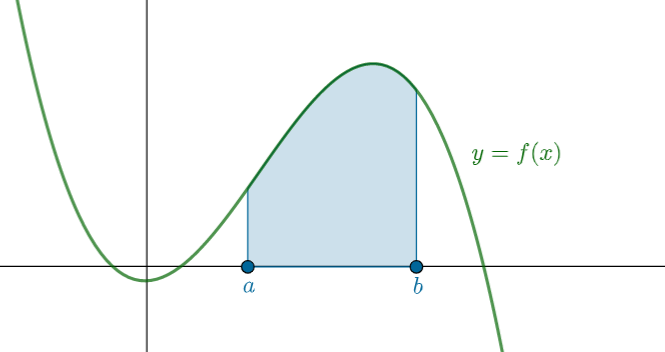Consider again the problem of finding the area

We've seen how we can do this with the trapezium rule, and Riemann sums are another way. In some ways, a Riemann sum is just a much simpler cousin of the trapezium rule. Instead of trapezia, we use rectangles:
Nevertheless, if we keep adding more and more rectangles, the Riemann sum converges to the true area just as surely as the trapeziums would. Slide
Let's take a closer look at a rectangle

We see its area is
We often write
As we add more and more rectangles, this approximation becomes more and more accurate. In fact
So this explains the notation:
Let
Given the below table of values
calculate a